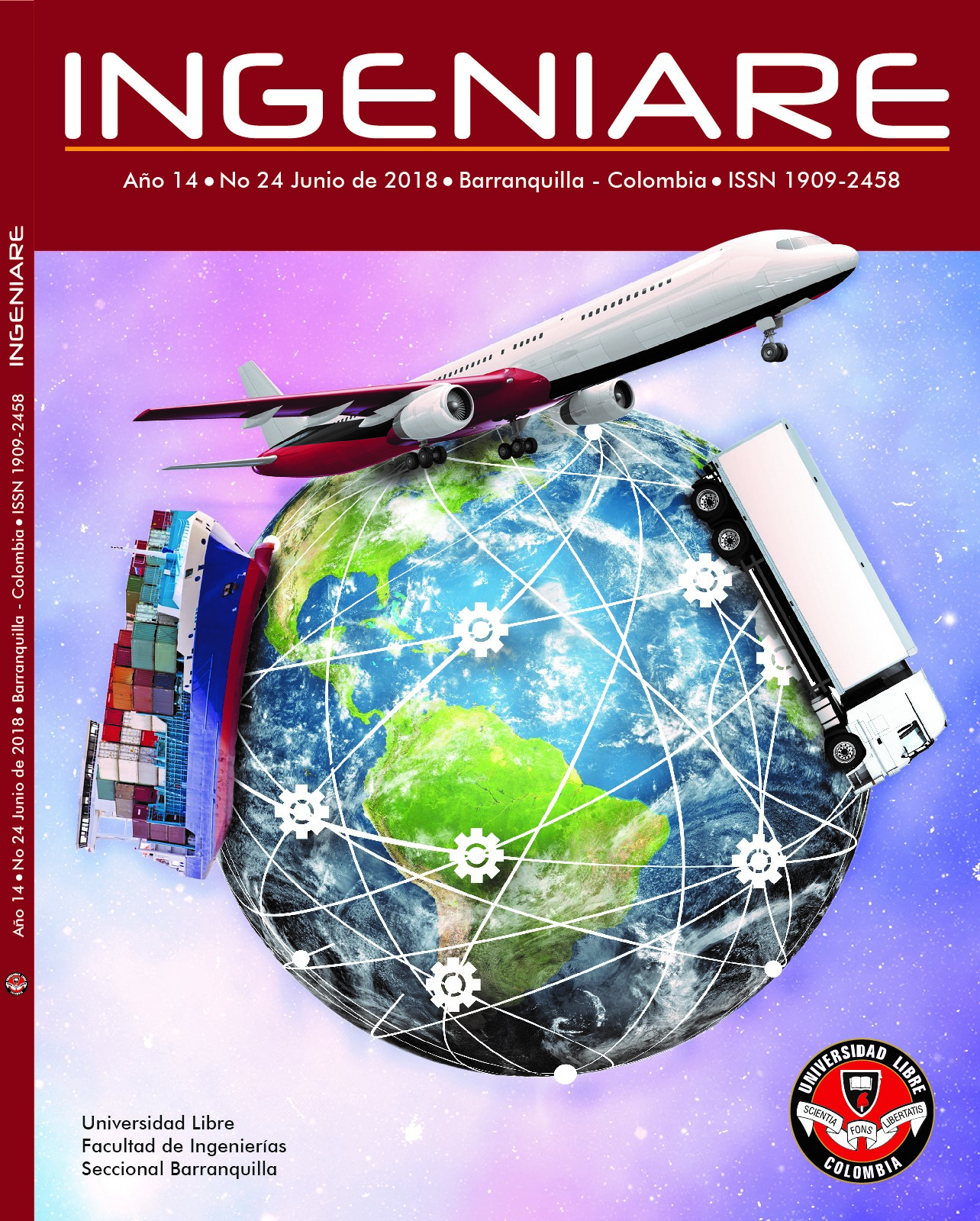Nanostructuration and experimentation of protein fibers for textile surfaces and sustainable fashion
DOI:
https://doi.org/10.18041/1909-2458/ingeniare.24.5171Keywords:
Natural sheep wool, silver nanoparticles, smoothness, microbial activity, nanotechnologyAbstract
To provide an added value and a more complete use of the virgin wool from the Cundiboyacense highlands, it was developed in the methodologies for the replacement of the improved properties; the first focuses on the smoothing of the fiber and the second on in situ nanostructuring based on the addition of ultraviolet light to promote the growth of silver nanoparticles (AgNPs) on the surface of the fibers. The incorporated AgNPs in the structure of the previously smoothed fiber allowed a delay the microbial activity, this demonstrated with the halos of inhibition formed when the fibers are in contact with P. aeruginosa and S. aureus.
Downloads
References
2. Rodríguez M., Y. (19 de Diciembre de 2014). Lana, una puesta de Colombia en el mundo de la moda. Obtenido del periódico EL ESPECTADOR: https://www.elespectador.com/noticias/nacional/lana-una-apuesta-de-colombia-elmundo-de-moda-articulo-534234
3. Hearle, J. W. S. (2002). Physical properties of wool. Wool: science and technology. Nafeie, N.
4. Elsevier B. V. (2017). Scopus. Obtenido de: https://www.scopus.com
5. Mongillo, J. F. (2007). Nanotechnology 101.
6. Gowri, S., Almeida, L, Amorim, T., Carneiro, N., Pedro S. António, & Fátima E. M. (2010). Polymer nanocomposites for multifunctional finishing of textiles – a review. Text Res J, 80, 1290-1306.
7. Holme, I. (2009) Finishing chemicals provide technical textiles enhancements. Journal for Asia on Textile & Apparel, October issue.
8. Linford M. R., Soane D. S., Offord D. A. & Were Jr W. (2005). Durable finishes for textiles, US Patent 6,872,424 (to Nano TexLLC, USA) 29 March 2005.
9. Siegfried, B. (2007). Functions, nanoparticles and commercial applications. Semester Thesis in the frame of the “Nanosafe-Textiles” project TVS Textilverband Schweiz and EPA. http://www.empa.ch/plugin/template/empa/*/78337/-/1=1
10. Soane D. S., & Offord D. A. (2002). Modified textiles and other materials and methods for their preparation. US patent 6,379,753 B1 (to Nano-Tex, LLC, USA), 30 April 2002.
11. Xue, C-H., Jia, S-T., Zhang, J. & Ma, J-Z. (2010a). Large-area fabrication of superhydrophobic surfaces for practical applications: and overview. Sci Technol Adv Mater, 11, 1-15.
12. Dastjerdi, R. & Montazer, M. (2010). A reviuw on the application of inorganic nano-structured materials in the modification of textiles: Focus on anti-microbial properties. Coll Surf B: Biointerfaces, 79, 5-18.
13. Gulrajani, M. L. (2013). The use of nanotechnology in the finishing of technical textiles. Advances in the Dyeing and Finishing of Technical Textiles, 280.
14. Xue, C-H., Wang, T-L., Zhang, J., Jia, S-T., & Tian, L-Q. (2010b). Growth of ZnO nanorod forest and characterization of ZnO-coated nylon fibers. Mater Lett, 64(3), 327-330.
15. Li D, Sun G, (2007) ‘Coloration of textiles with self-dispersible carbon black nanoparticles’ Dyes and Pigments 2007 72 144–149.
16. BOZZI A, YURANOVA T, GUANAQUILLO I, LAUB D, KIWI J, ‘Self-cleaning of modified cotton textiles by TiO2 at low temperatures under daylight irradiation’ J Photochem Photobiology A: Chem 2005a 174 156–164.
17. BOZZI A, YURANOVA T, KIWI J, ‘Self-cleaning of wool-polyamide and polyester textiles by TiO2-rutile modification under daylight irradiation at ambient temperature’ J Photochem Photobiology A: Chem 2005b 172 27–34
18. HU JY, LI Y, CHANG YF, YEUNG KW, YUEN CW, ‘Transport properties of fabrics treated with nano-wool fibrous materials’, Coll Surfaces A: Physiochem Eng Aspects 2007 300 136–139
19. XU W, FANG J, CUI W, HUANG J, ‘Modification of polyurethane by superfine protein powder’ Poly Eng Sci 2006 46(5) 617–622.
20. XU WL, WANG X, LI WB, PENG X, LIU X, WANG XG, ‘Characterization of superfine wool powder/ poly(propylene) blend film’ Macromol Mater Eng 2007 292(5) 674–680.
21. ASTM Standard D1907. (2012). Linear Density of Yarn (Yarn Number) by the Skein Method 1, (August), 1–9. https://doi.org/10.1520/D1907
22. Giraldo, J. (2015). Manual Técnico Textil (Edición Especial N° 4). Medellín, Colombia. Microdenier S.A., Polinylon, Grupo Gomelast & Lycra. Retrieved from http://www.microdenier.com.co/manualtecnico.pdf
23. ASTM Standard D 276 (2000) Standard Test Methods for Identification of Fibers in Textiles, Vol. 7, ASTM International, West Conshohocken, PA.
24. Díaz, M. y Limas, C. (2016). Fibras de yanchama colorada (Brosimum utile) retardantes a la llama producidas a partir de nanoestructuración con hidróxido de magnesio. Tesis Ingeniería Química. Universidad Jorge Tadeo Lozano.
25. Lu, Z., Meng, M., Jiang, Y., & Xie, J. (2014). UV-assisted in situ synthesis of silver nanoparticles on silk fibers for antibacterial applications. Colloids and Surfaces A: Physicochemical and Engineering Aspects, 447, 1–7. https://doi.org/10.1016/j.colsurfa.2014.01.064
26. SENA-Centro Nacional Textil. (2009). Control de calidad de análisis cuantitativo de fibra textiles. https://controldecalidad.wordpress.com/
27. Vu, T., Xue, Y., Vuong, T., Erbe, M., Bennet, C., Palazzo, B., Hu, X. (2016). Comparative study of ultrasonication-induced and naturally self-assembled silk fibroin-wool keratin hydrogel biomaterials. International Journal of Molecular Sciences, 17(9), 1–15. https://doi.org/10.3390/ijms17091497
28. Dotor, Angela L. & Ramos Kalmar, E. (2017). La lana: fibra ancestral como propuesta para superficie textil sostenible de calzado. bogotá, Colombia: Revista Kepes.


